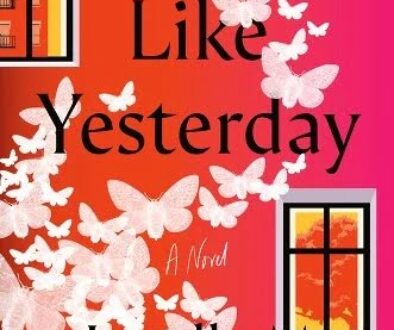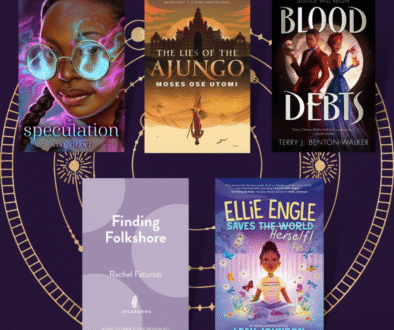The Plot Thickens: Bad Witch Burning
Content warning: physical and emotional abuse by family members; violence; suicidal ideation
Growing up Black and a young woman is not for the faint of heart. Jessica Lewis, author of Bad Witch Burning, attests to this fact, pulling details from her own life to share Katrell, the protagonist of this novel, with the world.

Katrell is 16 going on 17 in modern day Alabama and her world is nowhere near as idyllic as the life led by Liesl von Trapp, although the love she has for those near her is just as complicated. As we begin the story, Katrell is still reeling from her mother’s decision to rely on the meager earnings she and her mother’s boyfriend, Gerald, bring in months after being laid off from a retail job. Though recent, nothing about this dynamic is new for Katrell, who has found herself consumed by concerns about making rent and enough money to cover utilities and other basic needs for most of her life. Because of her restaurant job and phantasmal connections she makes for clients, Katrell is unable to truly focus on school and plans to drop out as soon as she turns 17 in order to keep her mother from going to court. Circumstances take on a more dire dimension when Katrell stands up to Gerald and her powers amplify from simple communion with the dead to their resurrection. Seizing an entrepreneurial opportunity in bringing people back from the beyond, Katrell is soon raking in enough money to cover rent for the year in addition to the other expenses she’s been worried about. However, using her powers in such an extreme way puts a lot of wear and tear on her body—clouding much of her thinking and how well she manages school and work—something that does not go unnoticed by those who care for her.
Luckily, Katrell is not alone as she faces these issues. Her best friend Wilhelmina—Will—and her adoptive family are supportive of Katrell and make sure she has somewhere to stay and food to eat. Distressed by the idea that she is a burden to Will’s family as her mother is to her, Katrell does her best to only seek this support during emergencies, and even when abused does her best to protect her mother from consequences. Understandably, Katrell’s feelings about her mother are complicated and she comes into conflict with Will whenever her mother’s lack of care is brought up. This loyalty to those closest to her leads to some strange occurrences with those that she resurrects. Her once docile dog, Conrad, is suddenly ready to attack any threat he perceives after his resurrection. Later, some of the people she’s resurrected even go out of their way to help her build a safety net of sorts—leading Katrell to question her own morality. Katrell’s struggle to balance the emotions tying her to her mother, Will and her family, Mike (a school counselor who has shown concern for her), and the people she’s resurrected, while also dealing with the toll that resurrections have on her body, is the primary conflict of this story and leads to several unexpected consequences.
This book resonated with me on so many levels, particularly because being around 17 and broke is a feeling that I don’t think you ever recover from. You’re old enough to know exactly which factors in life have you in this desperate situation—especially in understanding who and what you can count on—while also feeling the weight and responsibility of needing to do something about it. It’s a tenuous time where childhood is practically over, yet still unfinished and worthy of its own observance. I appreciate seeing multiple adults in Katrell’s life have this exact concern about how she balances her life even while she points out that she is the only person she can count on in her life to make sure they can survive without being ripped apart. It is only when the person she feels closest to, Will, brings this up that we see the fullness of Katrell’s inner conflict, which feels true to the teenage experience.
All in all, this book is perfect for the reader who is looking for a story with strong, conflicted, characters leading imperfect lives who are fine with narratives that include abuse and other triggering moments. The pacing, emotional beats, and conflicts in this story feel real although the story hinges on the surreality of the dead being back to some semblance of life. How real is life if we don’t confront the emotions we’ve tried to bury?



